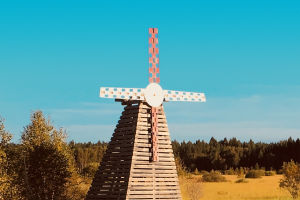Slow shutter photography, also known as long exposure photography, is a technique used to capture images with a longer than usual exposure time. In this technique, the camera's shutter is left open for a prolonged period, allowing light to enter the camera for a longer time.
This results in the capture of more light, which creates a blurred or "motion blur" effect, giving the image a dreamy, ethereal quality.
While the slow shutter technique is relatively simple, mastering it requires a good understanding of the basic principles of photography. This includes knowledge of shutter speed, aperture, and ISO, which all affect the exposure of an image.
Shutter speed is the length of time that the camera's shutter is open, and it is measured in seconds or fractions of a second. The longer the shutter is open, the more light enters the camera, resulting in a brighter image.
However, a longer shutter speed also means that the image is more susceptible to motion blur. Therefore, slower shutter speeds are typically used when the subject is still, and faster shutter speeds are used when the subject is in motion.
The aperture is the opening through which light enters the camera. It is measured in f-stops, and the smaller the f-stop number, the wider the aperture. A wider aperture allows more light to enter the camera, resulting in a brighter image.
However, a wider aperture also results in a shallower depth of field, meaning that only a small portion of the image will be in focus.
ISO refers to the camera's sensitivity to light. A higher ISO setting allows the camera to capture more light, resulting in a brighter image. However, a higher ISO also leads to more noise or grain in the image.
Slow shutter photography is commonly used in situations where there is low light, such as in nighttime photography or indoor photography. In these situations, a slower shutter speed is necessary to capture enough light.
Slow shutter photography is also used in landscape photography to create a sense of movement in waterfalls or clouds.
One of the most popular subjects for slow shutter photography is light trails. This technique involves capturing the light trails left by moving cars, bikes, or other vehicles. The photographer will typically set up their camera on a tripod and use a slow shutter speed to capture the movement of the lights. This creates a beautiful, abstract image of streaking lights.
Slow shutter photography can also be used to capture the movement of people. This technique is commonly used in street photography to capture the movement of people walking or running. By using a slow shutter speed, the photographer can create a sense of movement and blur in the image, giving it a dynamic quality.
In conclusion, slow shutter photography is a powerful technique that can add depth and creativity to your images. While it may seem daunting at first, mastering the basics of shutter speed, aperture, and ISO will allow you to create stunning, dreamlike images.
By experimenting with different shutter speeds, apertures, and ISO settings, you can create a wide range of effects and capture unique images that truly stand out. So, go out and experiment with slow shutter photography, and see what beautiful images you can create.


